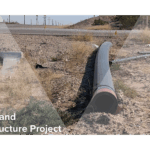
In today’s rapidly evolving regulatory landscape, achieving and maintaining environmental compliance is of utmost importance for businesses operating in Cedar Park. Environmental compliance refers to the adherence to local, state, and federal regulations that aim to protect the natural environment. For businesses in this region, understanding and meeting these requirements is crucial for sustainable growth and responsible business practices.
Understanding Environmental Compliance
Environmental compliance encompasses a broad range of regulations designed to minimize environmental impacts and ensure the well-being of both the ecosystem and the community. It involves various aspects, including waste management, pollution control, resource conservation, and sustainable practices.
Definition and Importance of Environmental Compliance
Environmental compliance can be defined as the process of ensuring that an organization operates in accordance with all relevant environmental laws and regulations. This includes obtaining the necessary permits and licenses, implementing best practices, and conducting regular environmental audits. Compliance is essential to protect the environment, mitigate risks, and maintain a positive reputation.
Key Elements of Environmental Compliance
Environmental compliance comprises several key elements that organizations need to consider. These include:
- Monitoring and reporting: Regular monitoring of relevant activities and reporting the findings to the appropriate authorities is essential for compliance. This allows for early detection of any potential environmental issues and enables prompt action to be taken.
- Permitting and licenses: Ensuring that all necessary permits and licenses are obtained and renewed in a timely manner is crucial. This involves understanding the specific requirements of each permit or license and complying with any conditions or restrictions imposed.
- Waste management: Developing and implementing effective waste management strategies minimizes the environmental impact of operations. This includes proper handling, storage, and disposal of waste materials, as well as exploring opportunities for waste reduction and recycling.
- Pollution control: Implementing measures to prevent and control pollution helps maintain compliance with regulations. This may involve installing pollution control equipment, implementing pollution prevention practices, and conducting regular inspections to identify and address any potential sources of pollution.
- Resource conservation: Adopting sustainable practices to conserve resources such as water and energy contributes to environmental compliance. This can include implementing energy-efficient technologies, promoting water conservation measures, and exploring renewable energy sources.
Another important aspect of environmental compliance is community engagement. Organizations are increasingly recognizing the importance of involving local communities in their environmental initiatives. This can include conducting outreach programs, seeking input from community members, and collaborating with local organizations to address environmental concerns. By actively engaging with the community, organizations can build trust, foster positive relationships, and gain valuable insights that can help improve their environmental performance.
Furthermore, staying up to date with evolving environmental regulations is crucial for maintaining compliance. Environmental laws and regulations are constantly being updated and revised to address emerging environmental issues and scientific advancements. Organizations need to stay informed about these changes and adapt their practices accordingly to ensure ongoing compliance.
The Role of Auditing in Environmental Compliance
Auditing plays a vital role in the environmental compliance process, enabling organizations to assess their performance and identify areas for improvement. Environmental audits are comprehensive evaluations of an organization’s environmental practices, policies, and procedures.
Purpose of Environmental Audits
The primary purpose of environmental audits is to assess an organization’s compliance with environmental regulations. Audits help identify any non-compliance issues, potential risks, and areas for improvement. By conducting regular audits, organizations can stay proactive in maintaining compliance and minimizing environmental impacts.
Types of Environmental Audits
There are various types of environmental audits that organizations in Cedar Park may undertake. These include compliance audits, which focus on ensuring adherence to laws and regulations, and management system audits, which assess the effectiveness of an organization’s environmental management system. Other types of audits may include performance audits, due diligence audits, and site-specific audits.
Cedar Park’s Approach to Environmental Compliance
Cedar Park recognizes the importance of environmental compliance and has implemented robust environmental regulations to safeguard its natural surroundings. Businesses operating in Cedar Park must navigate these regulations to ensure compliance and contribute to the region’s sustainability efforts.
Local Environmental Regulations in Cedar Park
Cedar Park has local ordinances and regulations in place to protect its environment. These encompass various aspects, such as air quality, water management, noise control, and habitat preservation. Businesses must familiarize themselves with these regulations and take necessary actions to comply.
Cedar Park’s Environmental Initiatives
In addition to regulatory compliance, Cedar Park actively promotes sustainability and environmental stewardship. The city encourages organizations to adopt eco-friendly practices, invest in renewable energy sources, and engage in community initiatives focused on environmental conservation. By participating in such initiatives, businesses can showcase their commitment to sustainable practices.
The Auditing Process in Cedar Park
Conducting an environmental audit in Cedar Park involves a comprehensive and structured approach. This helps organizations assess their compliance status, identify areas for improvement, and develop strategies for sustainable growth.
Pre-Audit Activities
Prior to conducting an audit, organizations need to prepare and plan effectively. This includes reviewing applicable regulations, gathering relevant data, creating checklists, and assigning responsibilities. It is essential to engage stakeholders and communicate the objectives and scope of the audit.
Conducting the Audit
The actual audit process involves on-site visits, interviews, document reviews, and data analysis. Auditors verify compliance, identify gaps, and evaluate the effectiveness of existing environmental management systems. Throughout this process, organizations are encouraged to maintain open communication and share information transparently.
Post-Audit Activities
After completing the audit, organizations must analyze the findings and develop an action plan. This plan outlines the steps needed to rectify non-compliance issues, address areas for improvement, and promote sustainable practices. Continuous monitoring and periodic follow-up audits help ensure sustained compliance and ongoing improvement.
Challenges and Solutions in Environmental Compliance Auditing
While striving for environmental compliance, businesses in Cedar Park may face various challenges. These can range from changing regulations to resource limitations. However, with careful planning and strategic solutions, these challenges can be overcome.
Common Challenges in Compliance Auditing
Some common challenges faced during compliance audits include:
- New and evolving regulations: Keeping pace with frequently changing regulations requires organizational agility and ongoing awareness.
- Data management: Collecting, analyzing, and storing accurate and reliable data is crucial for compliance audits.
- Resource constraints: Limited staff, time, and financial resources can pose challenges to conducting thorough audits.
- Communication and documentation: Ensuring effective communication and documenting audit activities and findings is essential for compliance.
Effective Solutions for Compliance Auditing
To address these challenges, businesses can adopt the following solutions:
- Staying updated: Regularly monitor regulatory changes, engage with industry associations, and invest in training and development.
- Streamlining data management: Utilize technology solutions to streamline data collection, analysis, and reporting processes.
- Allocating resources: Prioritize environmental compliance by allocating dedicated staff, time, and financial resources.
- Enhancing communication and documentation: Implement robust communication channels and document audit activities for transparency and accountability.
Conclusion
Cedar Park’s commitment to environmental compliance encourages businesses to implement sustainable practices and contribute to the region’s long-term ecological well-being. By understanding the importance of compliance, conducting regular audits, and proactively addressing challenges, organizations can thrive while safeguarding the environment. As environmental regulations continue to evolve, businesses must remain vigilant and adapt to ensure a greener future for Cedar Park.
As you navigate the complexities of environmental compliance in Cedar Park, consider partnering with ESE Partners, a leader in environmental consulting. Our team of experts is dedicated to responsibly moving your business forward through comprehensive environmental problem-solving. Whether you require assistance with audits, assessments, remediation, or compliance strategies, ESE Partners is equipped to support your needs with innovative and sustainable solutions. Take the first step towards ensuring your organization’s environmental integrity and Request A Proposal today to learn how we can help you maintain compliance and contribute to Cedar Park’s ecological well-being.








